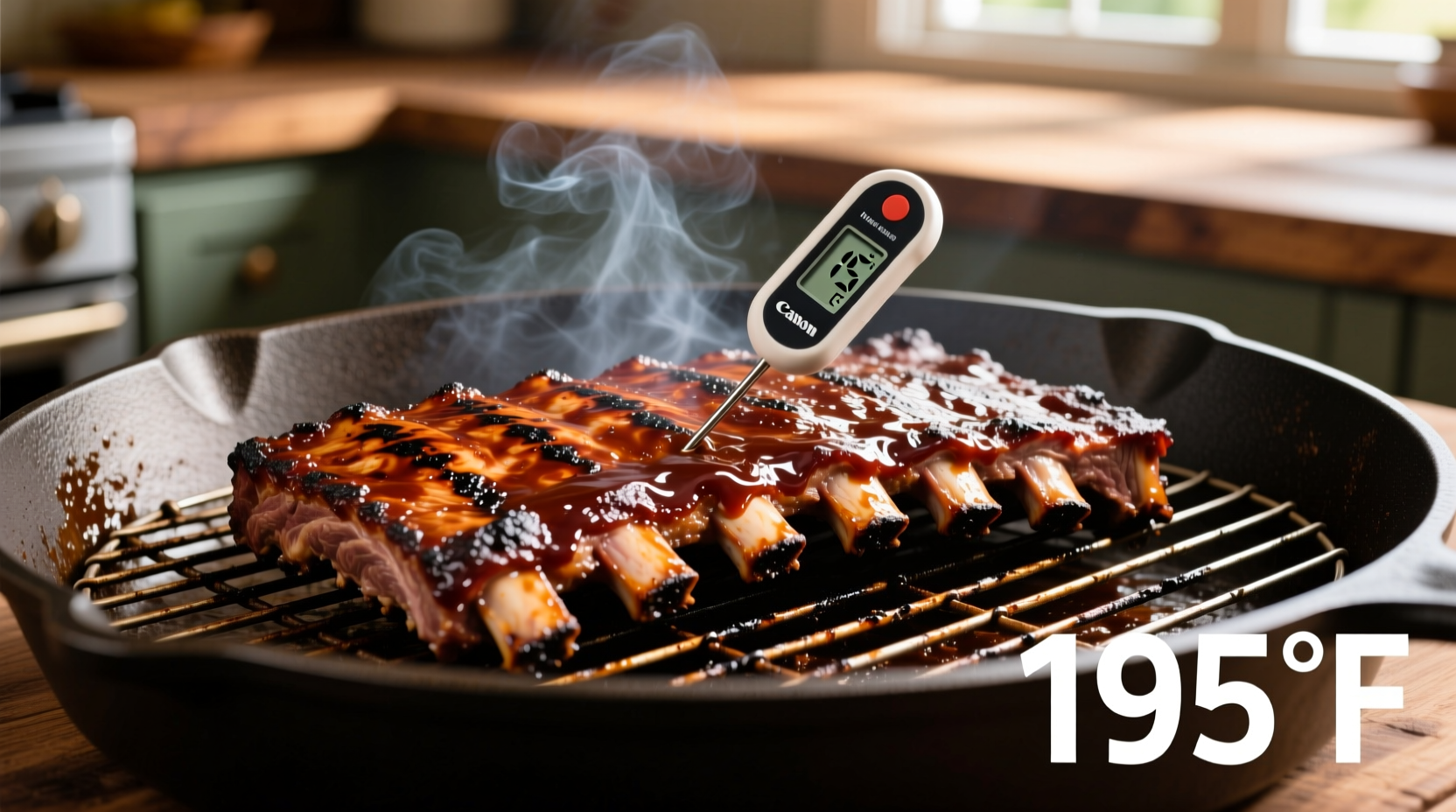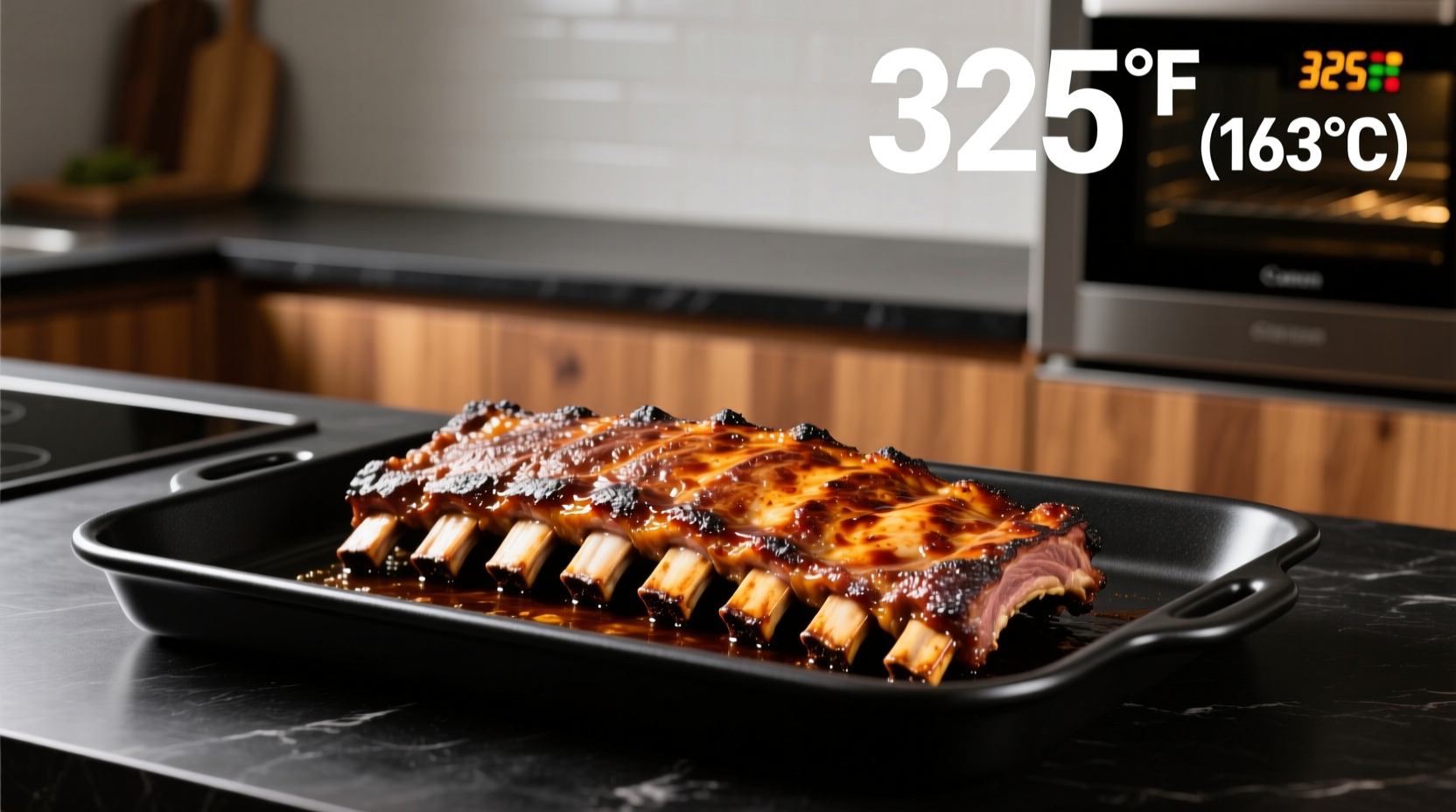The ideal oven temperature for cooking ribs is 225-275°F (107-135°C) for 2.5-4 hours, depending on rib type and thickness. This low-and-slow method breaks down collagen without drying out the meat, yielding tender, fall-off-the-bone results. Always verify doneness with a meat thermometer (190-205°F internal temperature) rather than relying solely on cooking time.
The Science Behind Perfect Oven-Cooked Ribs
Getting oven-cooked ribs right hinges on understanding meat science. Ribs contain abundant collagen that transforms into gelatin at 160°F, but requires sustained heat to fully break down. Cooking below 225°F risks underdone ribs with tough connective tissue, while temperatures above 300°F cause fat to render too quickly, resulting in dry, chewy meat. The 225-275°F sweet spot allows gradual collagen conversion while retaining moisture.
Your Step-by-Step Rib Cooking Journey
1. Rib Selection & Preparation
Before setting your oven temperature, understand your rib type:
| Rib Type | Recommended Temp | Cooking Time | Distinct Characteristics |
|---|---|---|---|
| St. Louis Cut | 250°F (121°C) | 2.5-3 hours | Square shape, uniform thickness |
| Baby Back Ribs | 225°F (107°C) | 2-2.5 hours | Leaner, more tender, curved bones |
| Spare Ribs | 275°F (135°C) | 3-4 hours | Fattier, meatier, irregular shape |
Remove the membrane from the bone side using a butter knife to lift the edge, then pull off with a paper towel for better seasoning penetration and tenderness. Apply a dry rub 1 hour before cooking, focusing on the meaty side rather than bones.
2. Oven Setup & Temperature Control
Preheat your oven to your selected temperature 20 minutes before cooking. Place ribs meat-side up on a wire rack positioned over a foil-lined baking sheet (catches drips while allowing air circulation). Add 1 cup of liquid (apple juice, broth, or water) to the pan bottom to maintain humidity. Insert an oven-safe thermometer probe into the thickest part of the meat, avoiding bone contact.

3. The Critical Cooking Phase
During the first 90 minutes, resist opening the oven - temperature fluctuations disrupt the cooking process. After 2 hours, check internal temperature. At 160°F, collagen breakdown begins. For extra tenderness, wrap ribs in foil with 2 tablespoons of butter when they reach 150-160°F (the "Texas Crutch" method), returning to oven until 190°F internal temperature.
4. Doneness Verification & Resting
Never judge doneness by time alone. Properly cooked ribs should reach 190-205°F internally. Perform the bend test: grab ribs with tongs at one end - they should bend significantly with cracks forming on the surface. Rest wrapped in foil for 15-20 minutes before serving; this allows juices to redistribute.
Evolving Rib Cooking Techniques
Rib cooking methods have evolved significantly over the decades. In the 1950s, ribs were typically roasted at 350°F for 1.5 hours - resulting in tough, dry meat. The 1970s saw the "low and slow" barbecue movement emerge, with pitmasters discovering that temperatures below 275°F produced superior results. Modern food science research from institutions like the USDA Food Safety and Inspection Service has validated these findings, confirming collagen breakdown occurs optimally between 160-205°F.
When Standard Temperatures Don't Apply
Certain situations require temperature adjustments:
- Thin cuts (under 1 inch): Reduce to 225°F to prevent overcooking
- Convection ovens: Lower by 25°F from standard recommendations
- Glazed ribs: Finish at 350°F for 10-15 minutes to caramelize sauce
- Competition-style ribs: Maintain 225°F for 5+ hours for maximum tenderness
Troubleshooting Common Rib Issues
Dry ribs typically result from temperatures exceeding 275°F or insufficient resting time. Tough ribs indicate either insufficient cooking time or temperature below 225°F. If ribs finish too early, hold at 170°F in a cooler with towels - this maintains texture while waiting for other components.
Pro Tips for Consistent Results
Season ribs the night before for deeper flavor penetration. Place ribs in the oven's center rack position for even heat distribution. Use an independent oven thermometer - built-in thermostats often vary by 25°F. For restaurant-quality results, apply a vinegar-based mop sauce every 45 minutes during cooking to enhance moisture retention.











 浙公网安备
33010002000092号
浙公网安备
33010002000092号 浙B2-20120091-4
浙B2-20120091-4